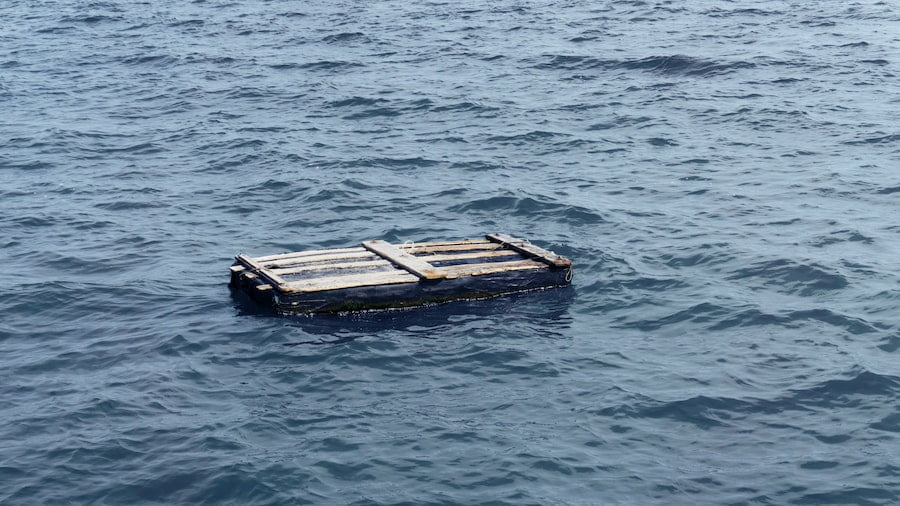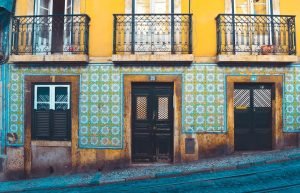Portimão, a coastal city located in the Algarve region of Portugal, has a rich history and culture deeply intertwined with sardine fishing. For many years, sardine fishing was the backbone of the local economy and played a significant role in shaping the identity of the community. This article will delve into the golden age of sardine fishing in Portimão, exploring its rise in the 20th century, its economic significance, the techniques and tools used, the daily life of a sardine fisher, its impact on the environment, the decline of the industry, and its lasting cultural and historical legacy.
The Rise of Sardine Fishing in Portimão in the 20th Century
Sardine fishing has a long history in Portimão, dating back to ancient times. However, it was during the 20th century that the industry experienced significant growth and became a major economic force in the region. Several factors contributed to this rise. Firstly, advancements in technology and transportation made it easier for sardines to be caught and transported to markets across Portugal and beyond. The introduction of motorized boats and refrigeration systems allowed for longer fishing trips and better preservation of the catch.
Additionally, Portimão’s strategic location played a crucial role in its success as a sardine fishing hub. The city is situated along the Atlantic coast, where sardines are abundant due to favorable ocean currents and feeding grounds. This made it an ideal location for fishermen to set sail and return with bountiful catches. The combination of technological advancements and favorable natural conditions led to a boom in sardine fishing in Portimão during this period.
The Role of Sardine Fishing in the Local Economy
Sardine fishing was not only important for Portimão’s economy but also for the livelihoods of its residents. The industry provided job opportunities and income generation for the local community. Many families relied on sardine fishing as their primary source of income, with multiple generations working in the industry. The fish were not only sold locally but also exported to other regions of Portugal and even internationally, contributing to the city’s economic growth.
The economic significance of sardine fishing extended beyond the fishermen themselves. The industry created a ripple effect, supporting various ancillary businesses such as boat builders, net makers, and fish processing plants. These businesses provided employment opportunities for individuals who were not directly involved in fishing but still benefited from the industry’s success. Overall, sardine fishing played a vital role in sustaining the local economy and improving the quality of life for many residents in Portimão.
The Techniques and Tools Used in Sardine Fishing during the Golden Age
During the golden age of sardine fishing in Portimão, traditional methods and tools were used to catch and process the fish. One of the most common techniques employed was purse seining. This involved using a large net called a purse seine, which was deployed from a boat and then drawn closed to encircle a school of sardines. The net was then hauled back onto the boat, capturing the fish inside.
In addition to purse seining, other methods such as drift netting and handlining were also used. Drift netting involved setting out long nets that floated in the water, capturing sardines as they swam into them. Handlining, on the other hand, involved using a single fishing line with multiple hooks attached to it. This method required more skill and precision but allowed for a more selective catch.
The tools used in sardine fishing during this time included wooden boats known as “botes” or “barracas,” which were specifically designed for the purpose. These boats were small and maneuverable, allowing fishermen to navigate the shallow waters close to the shore where sardines were abundant. Other tools included nets, ropes, and hooks made from natural materials such as hemp and wood.
The Life of a Sardine Fisher: Daily Routines and Challenges
The life of a sardine fisher was physically demanding and required immense dedication and skill. Fishermen would wake up before dawn to prepare their boats and equipment for the day’s fishing trip. They would then set sail, often in groups, to increase their chances of success. Once at sea, they would spend hours casting nets, hauling them back onto the boat, and sorting through the catch.
The work was physically strenuous, with fishermen using their strength to pull in heavy nets filled with fish. It was also mentally challenging, as they had to navigate the unpredictable waters and make split-second decisions based on their knowledge and experience. The long hours spent at sea meant that fishermen often had to endure harsh weather conditions, including strong winds and rough seas.
Despite the challenges, sardine fishing was a way of life for many in Portimão, and there was a strong sense of camaraderie among the fishermen. They relied on each other for support and shared their knowledge and expertise to ensure a successful catch. The job required not only physical strength but also a deep understanding of the sea and its rhythms.
The Impact of Sardine Fishing on the Environment and Marine Ecosystems
%27%20fill-opacity%3D%27.5%27%3E%3Cellipse%20fill%3D%22%2341413c%22%20fill-opacity%3D%22.5%22%20rx%3D%221%22%20ry%3D%221%22%20transform%3D%22matrix(40.16343%20103.01387%20-245.37817%2095.66895%20283.8%20397.3)%22%2F%3E%3Cellipse%20fill%3D%22%23b9b7c4%22%20fill-opacity%3D%22.5%22%20rx%3D%221%22%20ry%3D%221%22%20transform%3D%22matrix(2.06333%20-82.821%20896.2063%2022.32734%20481.4%2069.3)%22%2F%3E%3Cpath%20fill%3D%22%23907cf9%22%20fill-opacity%3D%22.5%22%20d%3D%22M-117.7%20343.9L40.3-207l172.3%2049.5-158%20550.8z%22%2F%3E%3Cellipse%20fill%3D%22%23b3b4ac%22%20fill-opacity%3D%22.5%22%20rx%3D%221%22%20ry%3D%221%22%20transform%3D%22matrix(-2.84933%2070.94201%20-226.79238%20-9.10892%20848.4%20189.4)%22%2F%3E%3C%2Fg%3E%3C%2Fsvg%3E)
While sardine fishing brought economic prosperity to Portimão, it also had significant environmental consequences. Overfishing during the golden age led to a decline in sardine populations in the region. The large-scale extraction of sardines disrupted the delicate balance of marine ecosystems, affecting not only sardines but also other species that depended on them for food.
Furthermore, traditional fishing methods such as purse seining and drift netting often resulted in high levels of bycatch, where non-target species were unintentionally caught in the nets. This had a detrimental impact on biodiversity, as it led to the depletion of other fish populations and the disruption of marine habitats.
The Decline of Sardine Fishing in Portimão: Factors and Consequences
The decline of sardine fishing in Portimão can be attributed to several factors. Overfishing played a significant role, as the once abundant sardine populations dwindled due to excessive extraction. Changes in ocean currents and water temperatures also affected the availability of sardines in the region. Additionally, the introduction of industrial fishing methods and competition from larger fishing fleets further contributed to the decline.
The consequences of the decline were far-reaching, impacting both the local community and the economy. Many fishermen were forced to find alternative sources of income, leading to a loss of traditional knowledge and skills. The closure of fish processing plants and other ancillary businesses resulted in job losses and economic hardship for many families. The decline of sardine fishing also had cultural implications, as it threatened to erase an important part of Portimão’s identity.
The Legacy of Sardine Fishing in Portimão: Cultural and Historical Significance
Despite its decline, sardine fishing remains deeply ingrained in the cultural and historical fabric of Portimão. The industry has left a lasting legacy that is celebrated and preserved by the local community. Sardines are still an important symbol of the city’s identity, with festivals and events dedicated to honoring this heritage.
Portimão’s fishing museum, Museu de Portimão, showcases the history and traditions of sardine fishing in the region. Visitors can learn about the techniques, tools, and daily life of fishermen during the golden age. The museum also highlights the environmental impact of sardine fishing and the efforts being made to protect marine ecosystems.
Visiting Portimão: Exploring the City’s Sardine Fishing Heritage
For visitors interested in exploring Portimão’s sardine fishing heritage, there are several attractions and activities to consider. The Museu de Portimão is a must-visit, offering a comprehensive look into the history and culture of sardine fishing. The museum also hosts workshops and demonstrations where visitors can learn traditional fishing techniques.
Another popular attraction is the annual Sardine Festival, held in August, which celebrates the city’s fishing heritage with live music, dance performances, and, of course, plenty of sardines to sample. Visitors can also take boat tours along the coast to experience the beauty of the Atlantic Ocean and gain a deeper appreciation for the importance of sardine fishing in Portimão.
Remembering the Golden Age of Sardine Fishing in Portimão
The golden age of sardine fishing in Portimão was a time of economic prosperity and cultural significance. The industry played a vital role in shaping the identity of the community and sustaining the local economy. While it faced challenges and ultimately declined, its legacy lives on through cultural celebrations, museums, and the preservation of traditional knowledge.
As we reflect on this golden age, it is important to remember the impact that sardine fishing had on both the environment and the local community. By understanding its historical significance and learning from its mistakes, we can work towards a more sustainable future for both Portimão and other coastal communities around the world.
If you’re interested in learning more about the history and culture of Portimão, check out this related article on CoCreate’s website: The Best of Portimão: The City of Algarve. This article provides a comprehensive guide to the city, highlighting its top attractions, local cuisine, and vibrant atmosphere. Discover why Portimão is a must-visit destination for anyone seeking a unique and enriching travel experience.



